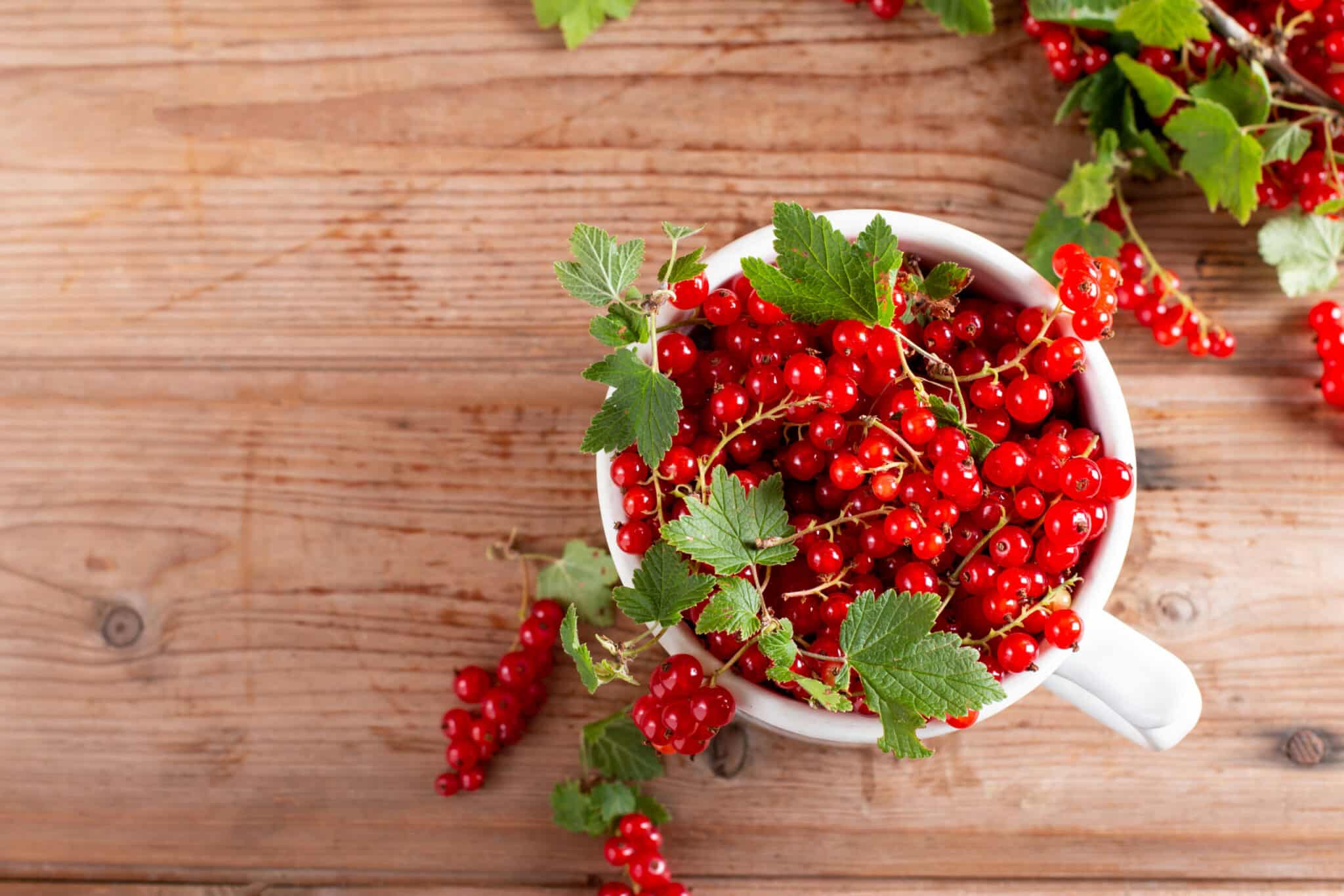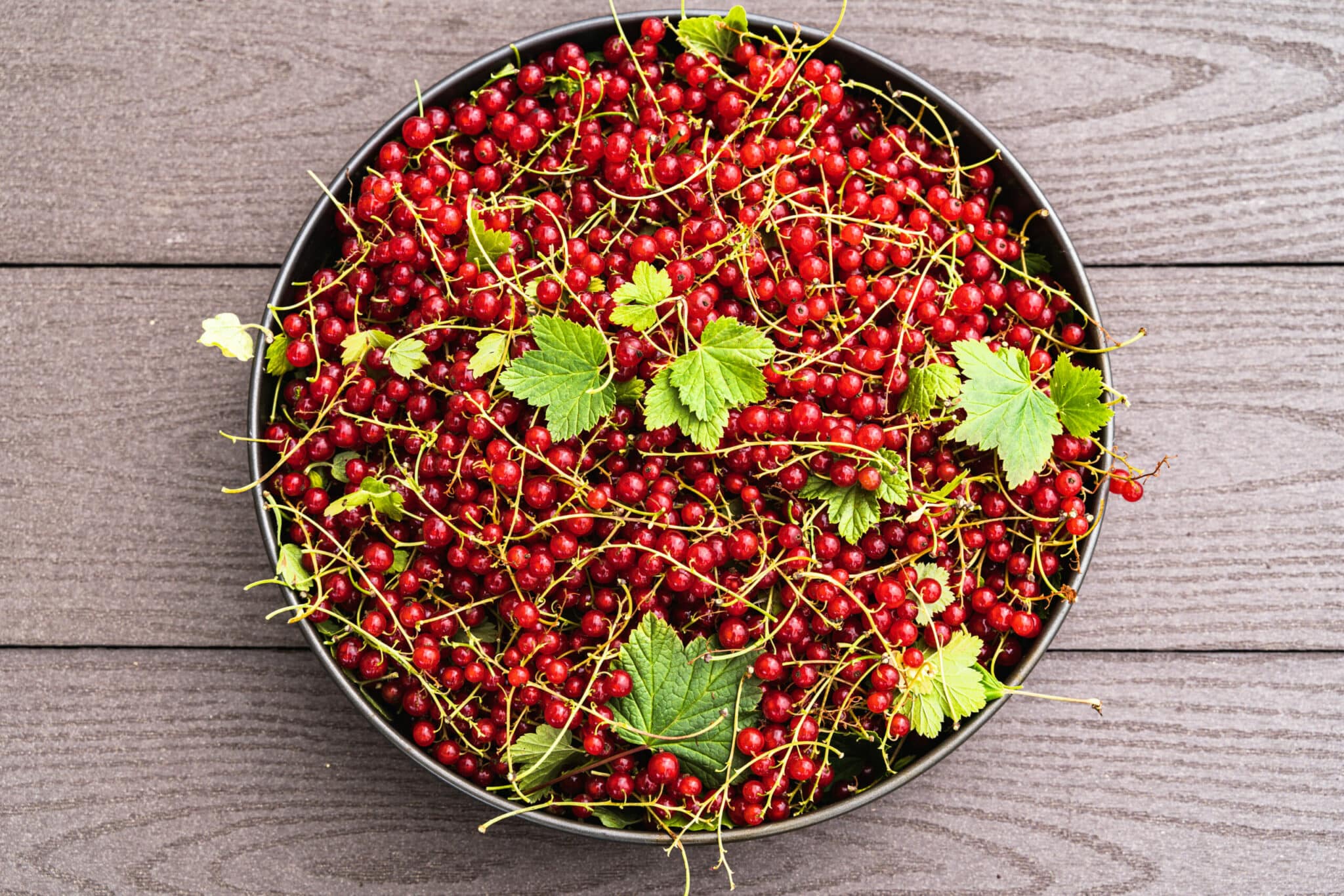Updated on November 9th, 2022
Many individuals desire to know what currants taste like. They have a particular taste and are a fantastic addition to jams, jellies, and relishes. Although sometimes clubbed with raisins, real currants are a separate and delightful fruit. The Zante currant is the closest relative of the raisin, and the real Currant is a tiny berry of the gooseberry family.

Currants are used in numerous recipes. However, they are not frequently accessible in the U.S. They’re frequently more costly than other berries and sold on stems or cardboard produce boxes. They’re also available in variations in red, purple, black, and white. The dry version is accessible in many countries. Fortunately, the taste doesn’t suffer from a lack of sweetness. This fruit is typically used in a dessert or two and is very popular in cooking and baking.
What are Currants?
Real currants are blooming shrubs belonging to the Ribes family that flourish in northern areas with hot summers and freezing winters. The small berries grow in bunches on stems and are best left on the plant to mature. Currants have been grown throughout Europe for centuries, and many types are native to North America and common in Denmark, Germany, the Netherlands, and the United Kingdom.
The color of currants ranges from a deep dark purple (black currants) through a beautiful ruby red to an almost transparent white. Dried black currants resemble Zante currants in appearance, and they have a deeper berry taste and are smaller than dried grapes.
What do Currants Taste Like?
The taste of currants is a combination of sweet and tart, like other berries. Tannins are present in all types in sufficient quantities to cause your mouth to pucker, and all of the varietals have a sharp, acidic kick that counteracts the sweetness of the wine.
Gooseberries are linked to currants, available in a rainbow of hues, and come in various sizes. They have a sour flavor, although their tartness is nothing like gooseberries. Although you may eat them fresh, cooking brings forth their natural sweetness. In addition, they work well in fruit pies and preserves, and they may be included in baked items. The dried Currant is required in a good number of recipes. If you have never tried currants before but are curious about their flavor, you can look for them at Eastern Europe or Central Asia stores.
Health Benefits
- Because of the fiber in them, it helps with digestion.
- Because of the manganese content, it aids in the management of type 2 diabetes.
- It’s high in antioxidants, which help you fight cancer symptoms by mending damaged cells.
- It aids in the treatment of heart disease symptoms.
- Glaucoma treatment and prevention may be aided by it.
- 100 grams of black currants, according to the USDA, contain
- calorie count: 60
- the energy of 40 kcal
- carbs (11 g)
- Sugar content: 9 g
- 1 gram of sugar added
- fat (0.20 grams)
- fiber (four grams)
- Protein (1 gram)
- Vitamin C (45 mg)
- Folate, zinc, iron, manganese, and calcium are all found in modest levels in black currants.
How do You Use Them in Recipes?
- Currants may be used in several cuisines. Black currant jam is the most common recipe.
- Currants and other fruits such as blackberries or blueberries and a lot of sugar are required. Gelatin may also be made using black currants or black currant syrup.
- Currant may be used to produce wonderful crumbles. This recipe for berry oat crumble with black currants is a must-try.
- Include black Currant as an ingredient in your pies for a great and healthful dessert. If you want to try something different, you may make black currant pudding.
- Bakers consider Black Currant Pudding the Queen of all desserts since it has many health advantages while still tasting fantastic.
- Black forest pudding is another classic dessert that uses black currants. . You may find the recipe here.
- You may also use Black Currant to prepare a sauce for game meat like turkey or deer.
- Currant is a fantastic ingredient to use in your cocktails. Dracula’s bite is a well-known drink prepared with black Currant, Campari, and gin.
- Although allergic reactions to black currants are uncommon, they may occur. Therefore, we should take precautions.
- Gamma-linolenic acid, an omega fatty acid found in black currants, may produce headaches, loose motion, and frequent gas production. . You should avoid black currants if you have a bleeding issue.
How to Use Currants?
- Fresh currants may be used in tarts, pies, and other sweets like sorbets and puddings, similar to blueberries, blackberries, or raspberries. Use them fresh in fruit salads, especially berry mixtures, or add a splash of color to sweets.
- Black currants go well with game meat and are often prepared into a simple sauce for duck or venison. White and pink currants are sweeter and more delicate than red currants and are more often utilized fresh.
- Fresh currants may be frozen to make them simpler to detach off the stem and prevent hurting the little fruits. It’s also normal to leave the stems on while making jam and then remove them after cooking.
- Currants are naturally high in pectin and acidity. When preparing jams and preserves, there’s no need to use pectin or other gelling agents, and they’re often mixed with low-pectin fruits. In sauce recipes, red currant jelly is a typical component. They’re the ideal foil for highly flavorful meats like hog, lamb, or game that benefit from a hint of sweetness since they carry the hefty acidic edge of the fresh fruits.
- It might be difficult to tell the difference between Zante currants and currant berries while making a dish. The berry is referred to in recipes that reference red or white currants. Look for signs that you’re dealing with fresh or frozen fruit, which signifies working with authentic currants. Consider the food’s origins as well; if it’s a Danish, Dutch, or French dish, currant berries should be used. When recipes call for a raisin or sultana alternative, dried Zante currants are most likely the culprit (dried black currants can make a great substitute).
- Currants may commonly be replaced for raspberries, blueberries, or blackberries in desserts such as scones, muffins, cheesecakes, and pies. Jams or chutneys made from blackcurrants are very popular, and. May use them in juices, ice creams, smoothies, and other foods.
- The easiest method to sample blackcurrants is to put some fresh berries in a skillet with a little water and sugar and slowly boil until the berries burst. After that, spoon the sauce over ice cream, fresh fruit, or cheesecake.

What Flavours Go with Currants?
Because there are so many tastes that go well with blackcurrant, the choices may as well be unlimited. Various flavors, including sweet, salty, peppery, acidic, and smoky, will work nicely when blended with blackcurrant.
To prevent the meal you are cooking from being overpowered by the flavor of the blackcurrant, it is usually advisable to combine the flavor of the blackcurrant with other somewhat robust tastes. Pears may be too light of fruit to compete with the strength of blackcurrants, but walnuts could be just the thing to do.
What are the Types of Currants?
There are two types of black currants: American and European. Much of North America is home to the American black Currant (Ribes americanum), sometimes known as wild black Currant. The European black Currant, Ribes nigrum, is a plant native to northern Europe and Asia.
Black Currants come in various shapes and sizes, from the highest yielding Ben Connan to the rust-resistant Crusader, smaller companion, and sweetest Ebony and Titania.
Does Currant Taste Like Licorice?
The flavor of black Currant has been compared to the lingering sweetness of licorice. The way the Currant’s aftertaste hits the fruity and sweet notes is sometimes compared to the candy-like flavor of licorice, which we find so appealing. Overall, Black Currant and Black licorice have a lot in common.
Does Currant Taste Like Blueberry?
Blueberries and black currants are small, dark-colored berries that grow in clusters on the branches of their plants. There comes the point when the parallels end. Blueberries have a sharp acidity and a delicious flavor, while Black Currant may be sour or sweet and have a long aftertaste.
They are dramatically different and easily discernible when comparing their taste profiles, particularly when the Currant takes on a riper, deeper blue, similar to blueberries.
Is Currant the Same as Black Grapes?
Grapes and blackcurrants are two different fruits from two families; Blackcurrants are categorized as aggregate fruits, whereas grapes are recognized as true berries. The dark violet color they share is the main source of misunderstanding, and Blackcurrant has a deeper taste with flowery and earthy notes.
Consequently, Blackcurrant is a good match for savory foods like wild game, hog roast, poultry, and beef. Wine, manufactured by fermenting grapes, is used to complement the taste of delectable dishes.
Conclusion
Not only do people like eating the berries of the black currant plant, but its leaves and petals also contribute to the production of fragrances and therapeutic oils. Even though they have a short season, you can find all their items on store shelves throughout the year. Therefore, even if you cannot locate any fresh ones, you should be able to get black currants from any department shop that you approach and inquire about them.
Fresh currants are a kind of berry that is very delicious and luscious. The black variant is superior to elderberries and bilberries in terms of the number of antioxidants it contains. The fruit has a high concentration of manganese and vitamin C. They are an outstanding resource for iron, zinc, and folate minerals. They are a wonderful addition to jams and jellies and beneficial to sodas and other carbonated beverages. However, you can also sweeten smoothies and other foods by adding them to different recipes.
